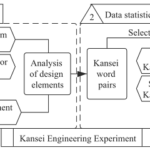Engaging with our rapidly evolving world demands a solid grasp of the complex topic of innovation. On the surface, innovation might seem like an abstract, unfathomable notion, synonymous with creativity. However, upon closer inspection, it transcends the limits of mere creativity, garnering immense significance in diverse aspects of societal, business, and technological domains. Unraveling these facets of innovation – from its fundamental concept, historical journey, pivotal role in the modern era, to its future prospects – elucidates how it distinctively impacts our lives. Understanding and leveraging innovation’s transformative potential could hold the key to not merely remaining adaptable but leading change in the tomorrow that awaits us.
Understanding the Concept of Innovation
Understanding the Concept of Innovation
Innovation is primarily about the successful implementation of creative ideas. It involves the development, application, and transformation of novel ideas into tangible services, products, or methodologies. Unlike creativity, which is associated with the generation of fresh and unique thoughts or ideas, innovation primarily entails the efficient application of those ideas to produce a measurable result, be it economic, cultural, or social.
The Importance and Benefits of Innovation
Innovation plays a critical role in various societal sectors including business, education, healthcare, and technology. In the business realm, innovation facilitates the continuous growth and competitiveness of businesses, offering improved goods and services to consumers, and maintaining a dynamic relationship with existing customers or clients. For society as a whole, innovation has the capacity to tackle pressing concerns such as environmental challenges, health crises, or resource scarcities by providing novel solutions that were previously unimagined or unattainable.
In the technological sphere, constant innovation leads to the creation of more effective, efficient, and accessible devices and applications, ensuring constant development and improvement in different fields. Moreover, innovation drives economic growth and job creation by opening up new industries and opportunities.
Forms of Innovation
There are various forms of innovation that reflect its wide-ranging functional capabilities. Disruptive innovation, for instance, is characterized by the introduction of new technologies or products that drastically shift market dynamics and render older technologies obsolete. An example of this is the development of smartphones, which dramatically altered the landscape of mobile communication.
Sustainable or incremental innovation involves the consistent improvement of existing systems, processes, or products. It is incremental and often less risky, as it fortifies a proven concept. For example, new editions of software programs featuring enhanced functionalities and corrected bugs signify sustainable innovation.
Breakthrough innovation, also known as radical innovation, refers to novel discoveries or developments that significantly alter existing knowledge or usage patterns. This could be seen in scientific breakthroughs, such as the discovery of new particles in physics or the development of revolutionary medical treatments.
Innovation is a crucial driver of societal transformation, with its roots in differing aspects of life and industry. By discerning between creativity and innovation and recognizing its importance in business, society, and technology, we can better understand how it shapes our world. Understanding the multifaceted nature of innovation empowers us to utilize its transformative potential more effectively.

Photo by kaleidico on Unsplash
The Evolution of Innovation over the Years
Tracing the History of Innovation: A Global and U.S. Perspective
Innovation has been at work since the dawn of civilization, with pivotal inventions like the wheel reshaping transportation and commerce. A surge of colossal innovations during the Industrial Revolution between the 18th and 19th centuries brought about radical changes in economies and lifestyles around the world. These transformative innovations introduced us to the steam engine, electricity, the telegraph, and eventually the telephone.
Taking a look at the U.S. history, it has been a hub of landmark innovations and inventions from the late 19th to the early 20th century that laid the foundation of many sectors we see today. Luminary inventors such as Thomas Edison, pioneering inventions like the electric light bulb, phonograph, and motion picture camera, and the Wright brothers’ successful development of the first airplane, revolutionized their respective fields. Beyond that, the implementation of Henry Ford’s assembly line for mass production up-ended the world of automobile manufacturing and established a new benchmark for large scale production worldwide.
Digital Transformation and the Tech Industry’s Growing Role
The 21st century saw a shift in innovation paradigms, mainly influenced by the rapid advances in digital technologies. The technology industry emerged as a dominator in driving innovation in multiple sectors. Technological titans such as Apple, Microsoft, Google, and Amazon owe their success to path-breaking innovations that have redefined the way people live, communicate, and work. The introduction of smartphones and consequent app development heralded a new era of mobile-first strategy for businesses, education, healthcare, and a host of other industries.
These tech companies also led the era of digital transformation, namely the process of integrating digital technology into all aspects of a business, fundamentally altering how organizations operate and deliver value to customers. Whether through cloud computing, artificial intelligence, machine learning, or Internet of Things (IoT), digital transformations have significantly increased operational efficiency, improved customer service, and created new business models across industries.
The Rise of the Information Age and Globalized Internet
We are in the midst of a transformative era ushered in by the information age. Key factors in this transformation include the proliferation of data and progress in data processing technology, both of which have made significant strides in driving innovation in our daily lives. Businesses worldwide are now harnessing rich data, real-time analytics, and predictive modeling to make informed decisions, spot upcoming market trends and customize their offerings to meet individual customer preferences.
Complementing the information age is the advent of internet globalization, often referred to as globalization 2.0. This new wave has allowed businesses to tap into a global market, making their products and services accessible to customers in every corner of the world. Furthermore, open innovation models, crowdsourcing, and open-source projects that utilize global expertise have resulted in groundbreaking contributions such as Wikipedia and Linux, redefining the landscape of cooperative work.
While these developments have fostered innovation, they also raise complex questions about data privacy, security, the digital divide and the ethical considerations of AI technology, all of which will impact the trajectory of future innovation.

Innovation’s Role in the Modern Era
Propelling Technological Progress Through Innovation
Innovation is the quintessential driver behind the brisk pace of technological progress being observed in today’s world. From the ubiquity of smartphones and the rise of electric cars, to the emergence of artificial intelligence and quantum computing, innovation is redefining our way of life on multiple fronts. An interesting case study is Tesla, whose innovative strategy in designing electric vehicles has radically changed the dynamics of the auto industry, prompting a global trend towards eco-friendly transportation.
Similarly, the health sector has also benefited from technological innovation. Developments such as telemedicine and robotic surgery have proven to be game-changers in healthcare delivery, greatly improving the prospect of patient outcomes. These instances underscore how innovation serves as a catalyst for technological advancements, transforming industries and revolutionizing our lives.
Innovation in Business Strategies
In the realm of business, innovation plays an integral role in shaping strategies and propelling companies to success. Companies like Amazon and Apple lead in their respective markets because they cultivate a culture of innovation that encourages creative problem-solving and the development of novel products or services. Firms deploy innovative business models to adapt to changing market dynamics, customer behavior, and competitive pressures. This helps them to sustain their competitive advantage, improve profitability, and drive growth.
Societal Changes Fueled by Innovation
Beyond technologies and businesses, innovation is also transforming societal norms and behaviors. Innovations like social media platforms have reshaped communication and information consuming methods, thereby modifying societal interactions. Furthermore, innovations in renewable energy technologies are encouraging a societal shift towards sustainable practices, potentially playing a crucial role in mitigating the effects of climate change.
Innovation in Tackling Global Challenges
Addressing major global challenges like climate change, public health issues, and inequality requires innovative solutions. Innovation in areas like clean energy technology, for instance, is essential for tackling climate change by reducing greenhouse gas emissions. Similarly, the rapid development of COVID-19 vaccines bears testimony to how innovation can address public health crises. Innovative social enterprises and FinTech platforms address issues of poverty and inequality by providing unbanked populations access to financial services.
Present-Day Examples of Innovative Enterprises
Several contemporary businesses stand as testament to the power of innovation. Google’s advances in Search Engine technology, or SpaceX’s strides in reusable rockets, exemplify innovation. Netflix’s shift from DVD rentals to streaming revolutionized entertainment, as did Uber’s digital platform transforming personal transportation. Meanwhile, businesses such as Beyond Meat are redefining the food industry with plant-based meat substitutes. These examples underline that innovation can not only spawn entirely new industries, but also redefine existing ones.
The Integral Role of Innovation in Society
Innovation is more than a popular buzzword– it is an essential element in the evolution of modern society, driving advancements in technology, remolding business landscapes, and facilitating progressive societal change. Critical in addressing universal challenges, innovation serves as a primary propellant for human development and growth in the current era.

Driving Innovation: Strategies and Future Perspectives
Building a Framework for Innovation: Guiding Principles and Strategies
Innovation is a chief vehicle for corporate success, demanding a collaborative culture of continuous problem-solving and teamwork. To harness this, organizations must engage employees across all levels and departments, amalgamating a range of invaluable perspectives and ideas. Embracing potential failure—rebranding it as a learning opportunity—is also crucial, enabling a culture of risk-taking, repeated experimentation, and refinement.
Establishing a milieu of ongoing learning and growth is another linchpin in nurturing an innovative culture. Investments in holistic training programs, mentorship schemes, and providing employees the liberty to seek and implement creative solutions independently, are components of this. Recognizing and rewarding innovative efforts is equally important, as this motivates employees to persistently search for improved methods to bolster efficiency and productivity.
The Role of Innovative Thinking
Innovative thinking involves the ability to view problems from different angles and come up with unique solutions. This technique often gives rise to out-of-the-box ideas and breakthrough solutions. Techniques that can foster innovative thinking may involve brainstorming sessions, collaborative workshops, or using methods like design thinking. Design thinking integrates the needs of people, the possibilities of technology, and the requirements for business success. It discourages linear thinking and encourages exploring and prototyping multiple ideas before settling on one.
Innovation’s Future Prospects
As we look into the future, we are already observing an increase in sector-crossing innovations, where progress in one field is inspiring progress in another. For example, technology in the fintech industry could potentially revolutionize healthcare by creating personalized medicine through big data.
Moreover, in recent years, innovation has been increasingly directed towards sustainable solutions in various sectors, taking into account social, economic, and ecological dimensions. This trend is expected to continue into the foreseeable future.
The drive towards digitization and virtual workspaces is another prominent area where the future of innovation is expected to thrive. The growing reliance on AI and machine learning predicts a future where routine tasks are increasingly automated, freeing up human cognitive capacity for more complex problem-solving and creative tasks.
Maximizing the Potential of Future Innovations
To take full advantage of future innovations, both individuals and organizations need to remain flexible and adaptable. Regularly updating skills and knowledge to keep up with emerging trends is crucial. From an organizational perspective, companies should establish systems to track global trends and foresee potential disruptions.
Investments in research and development (R&D) are also essential as they give organizations a competitive advantage. Embracing collaboration, be it internally through interdisciplinary teams or externally through partnerships with academia or other companies, can lead to breakthrough innovations.
Additionally, establishing an entrepreneurial mindset can facilitate innovation. This involves being comfortable with uncertainty, demonstrating resilience, and being willing to explore new avenues.
Finally, organizations can maximize potential innovations by scaling them effectively. This requires creating an environment that allows for agile adjustments, speeding up the experimental learning process, and supporting the scaling of successful innovations to reap their full benefits.

Navigating the labyrinth of innovation and utilizing it to spur growth demand the cultivation of an innovative mindset, armed with effective strategies and forward-looking perspectives. As the cogs of the modern world continue to turn, spurred on by ever-evolving digital transformations, extracting the maximum potential from the opportunities that these transformations present will be pivotal. Innovation, given its profound impact and influence on our societies, industries, and personal lives, thus stands as a crucial lighthouse in the oceanic expanse of the future. It is a compass that can guide us, individuals, and organizations alike, towards resilience, evolution, and progress.
Writio: Get highly-ranked content effortlessly! This article was brought to you by Writio.





